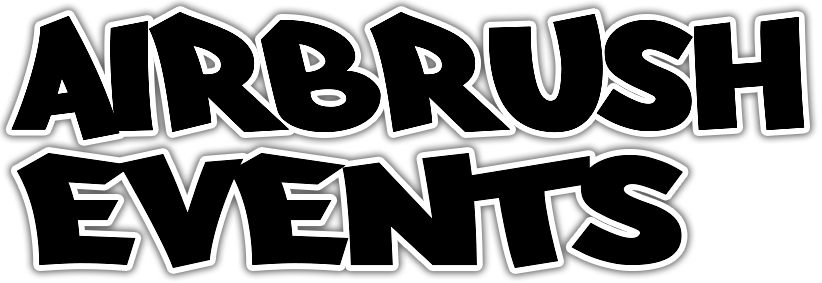At Airbrush Events, we’ve experienced exciting growth recently, which means expanding our team and refining our virtual onboarding process to integrate new admin staff smoothly. As a fully remote company, virtual onboarding has become our go-to method for integrating new team members into our workflow. One success story is Valerie, our newest admin team member, who joined us after working for eight years with a trusted hat supplier. But virtual onboarding doesn’t come without challenges, and in this article, I’ll walk you through the process we use at Airbrush Events to efficiently onboard admin staff, while sharing insights from Valerie’s experience.
The Importance of Virtual Onboarding in a Growing Business
As a company that operates entirely remotely, virtual onboarding is essential to our ability to scale. From Georgia to Texas, our team is spread across multiple states. The key to smooth onboarding lies in clear communication, effective use of technology, and fostering a strong company culture.
When hiring remotely, it’s crucial to make the onboarding process as seamless as possible. Using tools like Google Meet and Insightly CRM, we provide new hires like Valerie with the guidance and training needed to succeed in their roles, regardless of location.
Why We Hired Valerie: A Perfect Fit for Our Company Culture
| Valerie joined our team under unique circumstances. She had been our contact at a hat distributor for years and was always a pleasure to work with. When we learned that her company was downsizing, I reached out to her with an offer. She had multiple offers but chose us because she felt a strong alignment with our values and work culture. This was a huge win for us as Valerie’s work ethic and friendly demeanor were already well known. |
Our story with Valerie highlights the importance of finding team members who not only have the right skill set but also fit the culture of the company. Even in a virtual setting, company culture plays a significant role in keeping remote teams connected and productive.
Tools and Processes for Virtual Onboarding
Using Google Meet for Remote Training
Since our team is scattered across different states, we rely heavily on Google Meet for video calls and screen sharing during onboarding. This tool allows us to walk new hires through their tasks in real-time, guiding them with visual instructions. Video chats have become a fundamental part of our communication, especially since COVID-19 normalized remote work.
Valerie’s onboarding began with multiple video calls where we shared screens and went through her responsibilities step-by-step. This method allows for clear and interactive training sessions that are far more effective than emails or chat messages alone.
Insightly CRM: Organizing Tasks and Workflows
Another crucial tool for onboarding is Insightly CRM. Our CRM serves as the repository for all our client information, event details, and task lists. It helps us assign tasks to new hires like Valerie in an organized manner, ensuring that they are only given responsibilities they are comfortable handling at first.
By starting with simpler tasks, Valerie could gradually learn her role at her own pace. As she became more familiar with the system, we assigned more complex responsibilities. This incremental approach ensures that new hires are not overwhelmed while getting up to speed.
Challenges of Virtual Onboarding: Time and Communication
While virtual onboarding offers flexibility, it also comes with unique challenges, particularly in time management and communication.
All Hands on Deck for Training
One major hurdle we faced was finding the time to train Valerie. As a growing company, we’re often juggling multiple projects at once, and training requires the involvement of several team members. Valerie’s training involved everyone from the operations team to senior management, each sharing their expertise in different aspects of the business.
With everyone working remotely and on different schedules, coordinating training sessions required extra planning. But we made it work by scheduling regular video calls and making ourselves available for chat or video support when Valerie needed help.
Keeping Communication Lines Open
Another challenge is ensuring clear and consistent communication. Remote work can sometimes lead to miscommunication or delays in response times. To address this, we made sure Valerie had multiple channels to reach out to us—whether through a video call, instant message, or email. This open-door policy helped her feel supported throughout the onboarding process.
Valerie’s Role Moving Forward
Valerie has now settled into her role, and her responsibilities continue to expand. Starting with basic admin tasks, she is gradually taking on more complex duties such as scheduling artists, creating contracts, and making travel arrangements for events. Soon, she will be responsible for managing entire event contracts, guiding clients from start to finish.
By the time Valerie completes her training, she will be fully equipped to plan and execute events, ensuring that Airbrush Events continues to provide top-tier service to clients across the country.
Conclusion: A Success Story in Virtual Onboarding
At Airbrush Events, virtual onboarding has been key to our expansion, allowing us to recruit talented admin staff from anywhere. With tools like Google Meet and Insightly CRM, we can effectively train new hires like Valerie, helping them integrate smoothly into our remote team. Valerie’s onboarding experience showcases how a well-organized virtual process, combined with strong communication, can lead to success, even in a fully remote environment.
As our company grows, we’re excited to continue refining our virtual onboarding process to welcome more talented team members like Valerie.


